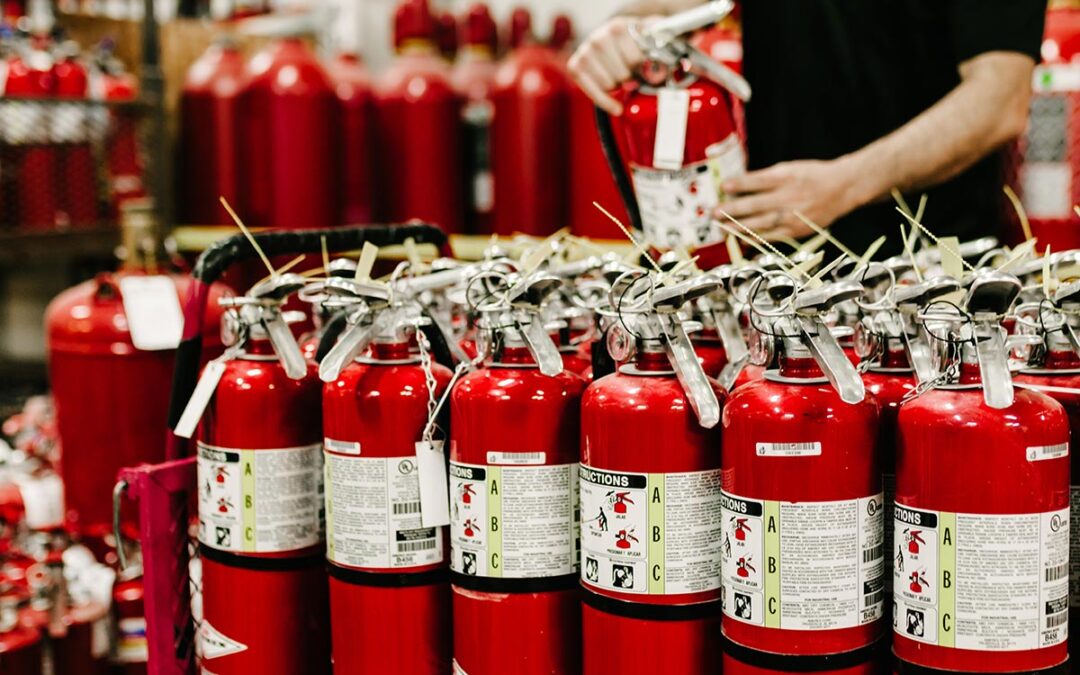Every type of facility needs fire extinguishers. They’re a critical part of a fire safety plan and passing fire safety inspections. Luckily, most fire extinguishers are never or rarely used in the suppression of fires, but this means that they don’t always get the necessary attention and preventative maintenance required. If you’re realizing that it’s been a while since you thought about or serviced your facility’s fire extinguishers, you might be wondering: do fire extinguishers expire? Well, here’s when to repair or replace your commercial fire extinguishers.
What’s the shelf life of a fire extinguisher?
This depends on the type of fire extinguisher you have. Dry chemical extinguishers have a service interval of 6 or 12 years, minimum. Pressurized water, carbon dioxide, and wet chemical extinguishers have a minimum service life of 5 years. After these respective time periods, to continue using a fire extinguisher, the National Fire Protection Association (NFPA) requires that the extinguisher be subjected to service or hydrostatic testing. Hydrostatic testing ensures the integrity of the shell. When an extinguisher passes the testing, it can be recharged.
Once recharged, a fire extinguisher can be used for another 5, 6 or 12 years (depending on the type), until the next required service or testing. There are some non-rechargeable fire extinguishers, which should be disposed of and replaced every 12 years.
Fire extinguishers do expire, here’s how to tell
So, how do you know if your fire extinguisher is too old? Here are the things to check:
- The date that the extinguisher was last serviced should appear on the extinguisher. If that date is more than the required testing interval, it’s time to service.
- The fire extinguisher fails the hydrostatic test
- The extinguisher model and technology is out of date:
– Dry chemical stored pressure with a manufactured date of 1984 or prior
– Stored pressure water extinguisher with a fiberglass shell (Pre 1976)
– Any extinguisher manufactured prior to 1955
– Pressurized water extinguisher manufactured prior to 1971
When to replace your fire extinguisher
If any of the conditions in the above list are true, it’s time for a new extinguisher. But there are a few other reasons to have a qualified contractor repair or replace your extinguisher as well, such as a broken handle, loose components, rust, a cracked/ripped/clogged hose, condensation, or a broken/leaky seal. Additionally, if the canister is dented or has been bumped or dropped, that may cause mechanical issues or malfunctions.
Always replace or have a qualified contractor repair your fire extinguisher if there are any signs of tampering. This includes a missing safety pin, damage to the extinguisher, or an inspection tag that is missing or seemingly falsified. If an inspection tag is missing, even if not due to tampering, it’s impossible to know the exact date of the last annual inspection completed on that extinguisher.
It’s also worth noting that if your fire extinguisher is pretty old and has been serviced several times that it might be worth replacing, even if it’s still technically functional. Clean agent fire extinguishers are now on the market that are safer and more effective than older designs.
Not sure how long your company’s had that dusty fire extinguisher in the back? No problem. The Vanguard team can help you find a great replacement, and while we’re at it, we can take a look at your fire suppression system to make sure everything’s working as it should. Give us a call to schedule your inspection today.


